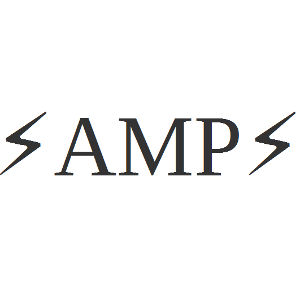| Google Tries For Email Takeover with AMP |
| Written by Mike James |
| Wednesday, 14 February 2018 |
|
Since its inception in 2015, AMP - Accelerated Mobile Pages that can be served more efficiently by (mostly Google) servers has been under suspicion as just another Google web takeover plan. Now you can add email to the conspiracy theory because we are about to have AMP for email.
The idea of AMP isn't terrible from a technical point of view, but there are much better ways to achieve the same result. Email is a simple technology, or it was, then along came HTML email. For most people, however, email is still relatively simple and consists of plain text and perhaps some attachments. The rule has long been that the only safe email is a simple, preferably plain text, email. Now Google has announced that it is going to bring AMP to Gmail. AMP is a restricted set of HTML, CSS and JavaScript components that can be used to create dynamic web pages. The idea is that, as the possibilities are limited, clients will most likely have the components already in their cache and the rest can be served by Content Delivery Networks - CDNs - which can be closer to the client. The CDN also takes the pressure off the publisher by taking over the need to serve the AMP pages. This is all good, but in practice the CDN is provided by Google and this is a cause for concern. There have been criticisms of Google's AMP project because of the way it converted links to the original website to its own AMP servers and Google has responded by making changes. The latest idea is that AMP should be the format for "richer" emails, to be known as AMPHTML4email. If you think we already have rich emails, or even far too rich emails, then it is worth pointing out that HTML emails are not subject to a standard. There is a sort of standard in the form of the email standards project, but it doesn't have the backing of enough people to make it an enforceable standard. In particular Google's Gmail rates as "poor" in how it conforms to the standard. Microsoft's offerings do much better in this respect. Google's idea is to add AMP as a new MIME part, text-x-amphtml. Any mail client not able to handle it will just ignore it and you will have to supply some non-AMP content as a fallback. If the email is viewed on Gmail, of course, the full AMP email will be rendered. This already singles out Google's mail as a special mail. One rule that has never been broken is that JavaScript isn't allowed in emails. The reasons are fairly obvious, but with AMP presumably some scripting is allowed as part of the standard components. Security is going to be a concern and proposals have already been outlined: "To maintain users’ expectations of security and privacy, we’ll only allow a conservative subset of AMP functionality. To enforce this, we propose adding a new AMPHTML email validation spec identified by a new attribute on the document element: Of course mentioning ads does bring to mind that the main use of AMPHTML4email is going to be marketing ads. Will Google manage to find a way to monetise Gmail even more than it already has? The promise of AMPHTML4email is that it will bring us emails that are more like apps. The components that are available are: Dynamic content
Presentation
Media
From this list you can see that emails are going to be dynamic and probably irritating. The question is will everyone jump on board? The only thing Google has to say is: "Companies like Pinterest, Booking.com and Doodle are developing new experiences for consumers using AMP for Email, and we’re excited to see what others will do soon." There seems to be no attempt to make AMPHTML a standard and Google makes no mention of hijacking any attempt to form a standard. Of course, if everyone takes it up then it will be a defacto standard, but this isn't a good way to do things and it is unlikely to happen because can you really see Microsoft, Yahoo! or Mozilla adopting AMPHTML4email? That would be handing email to Google on a plate. Google also seems to know that this is contentious. If you want early access to AMPHTML4email you need to apply for the developer preview the conditions of which say: "AMP for Email will be supported by Gmail later this year. You can sign up for the Gmail Developer Preview of AMP for Email here to start building and testing your own dynamic emails. Please be advised that space in this program is limited and will require an NDA to be signed. Applications will be reviewed on a one-on-one basis." The final requirement on the application form is one I've not seen before and reads: "Please provide the email address of a legal contact who can sign an NDA on behalf of your company. *
More InformationIntroducing the Gmail Developer Preview of AMP in Email Bringing the power of AMP to Gmail Related ArticlesGoogle Speeds Up Mobile HTML With AMP Google Launches Fast Web Page Technology AMP Early
To be informed about new articles on I Programmer, sign up for our weekly newsletter, subscribe to the RSS feed and follow us on Twitter, Facebook or Linkedin.
Comments
or email your comment to: comments@i-programmer.info |
| Last Updated ( Saturday, 17 February 2018 ) |



